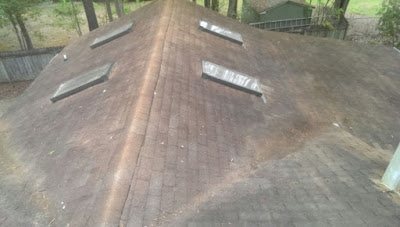1- Buy a house that's WELL BELOW what you can afford. Yes, yes... we all know the rule: don't max your budget and buy the least expensive house that meets your needs. But this is real! This is primarily how we fund our projects. We bought a house $100,000 under our budget. Yeah, that's right. We qualified for a mortgage of $215,000 but we bought a house for only $112,000. That means that our actual mortgage is only about $130/month (our actual payment is roughly $600/month after taking into account our escrow for homeowners insurance and taxes). We could have afforded almost $1200/month (which was what we were paying in rent before buying our fixer upper). That's easy math and easy money: $600 extra per month to play with. Sometimes we use that money to finance other things (a new sports car and family car) but typical that amount goes directly into our savings account in order to finance house update projects.
2- Put down the MINIMUM amount necessary to qualify for your loan. Yeah, this is probably contrary to what you've heard, which is to put down as much as possible to make your loan amount as small as possible (thereby decreasing your interest etc...). Well, this just doesn't make since when you buy a fixer upper. Chances are that when you buy a fixer upper you will have a lot of upfront costs and unplanned expenses. This means that you need a large chunk of money ready to spend and ready in case of emergency. Many of our early projects were funded by a chunk of about $10,000 that we had ready. That's right, I'm advocating for you to have the money in cash BEFORE buying the house in the first place. This means that you WON'T spend more than you already have. It also means that you wont be paying interest on additional funds. CASH, CASH, CASH. The most important way to finance a fixer upper. HAVE CASH READY.
3- Whatever you do, DON'T Take out a CONSTRUCTION LOAN. That's right. DON'T DO IT. Construction loans are a great way to end up spending more on your home than it's worth. Construction loans are extremely high interest short term loans that you can use to rebuild or renovate parts of your home. Unless you bought your home for dirt cheap and the work is being done by a fast-working professional crew, this is NOT the loan for you.
4- Take out a Home Equity Loan as a LAST RESORT. This is a great last option if you have unforeseen needs that you just don't have the cash on hand to take care of. For example, you find out that even after passed inspections and clean "bill of health" your home ends up with a serious mold issue that will cost you thousands (or a new roof, new heat pump, hot water heater, flooded crawl space, etc...). This type of loan takes the amount you owe on your home compared to the estimated value of your home and lets you take out a loan for the difference. In other words, you will owe what your house is worth. The danger in this is that there is no fall-back. Your at your max on your homes' value. Any more money that you put into the home will put you in the negatives. Not good.
5. Beg and plead with your relatives for free help. I just had to throw this in because our family has been instrumental in helping us. They have offered us free help at every turn. Their labor is much much cheaper than paid labor and much more enjoyable. But this brings up a good point: utilize your resources. Sure, you could probably learn as you go... but if you have a father-in-law who knows how to do roofing, or you have a parent who is willing to do your dirty insulation work, USE THEM. They want to help, so give them a job.
6. Two Words: Child Labor. We have three kids. They LOVE to help us do housing projects. Painting stuff, scratching stuff up, ripping stuff out, destroying stuff... KIDS LOVE IT. Give your kids some jobs that they can do. After-all, it's their house too.
BONUS: Have your husband and kids scower the forest for plants to plant in your garden. Ok, Ok... it sounds crazy... But for real! This is how we have been able to plant much of our garden! We have had the worst time trying to find plants that will grow in our sandy, dry (but strangely often flooded), densely shaded, forested yard. The best way we have found to find plants that will actually grow in our "native" crazy habitat is to go to the source of the best natural flora: the woods next to our house.
Do you have any other suggestions for how to finance your fixer upper projects? Please share your comments below.























